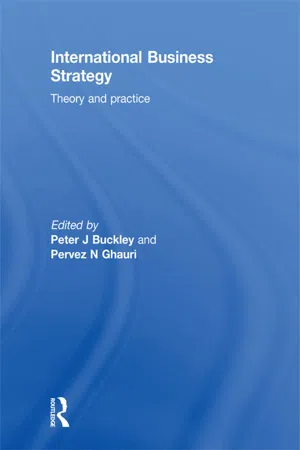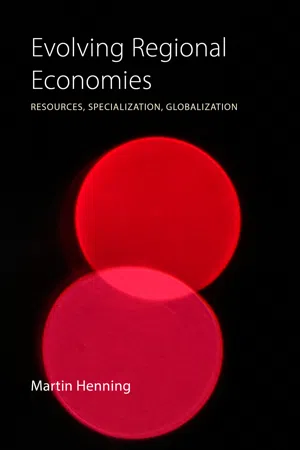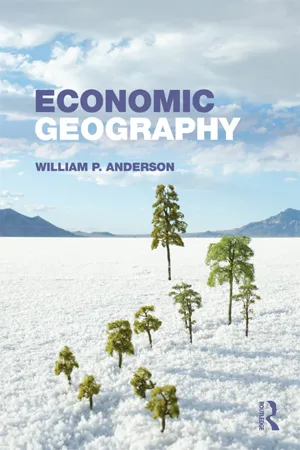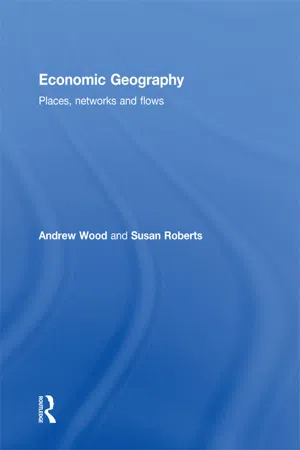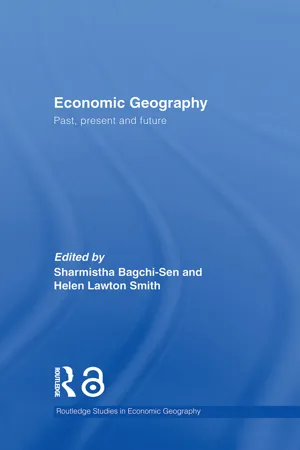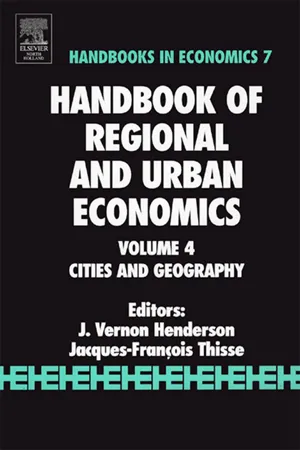Economic Impact of Globalisation
The economic impact of globalization refers to the effects of increased interconnectedness and interdependence of economies on a global scale. This includes the flow of goods, services, capital, and technology across borders, leading to both opportunities and challenges for different regions and industries. It can influence employment patterns, income distribution, and the overall economic development of countries.
8 Key excerpts on "Economic Impact of Globalisation"
- eBook - ePub
International Business Strategy
Theory and Practice
- Peter J Buckley, Pervez Ghauri, Peter J Buckley, Pervez Ghauri(Authors)
- 2015(Publication Date)
- Routledge(Publisher)
...The progress of research in this area depends on inter-disciplinarity and connectivity. Economic geography has a long history (Clark et al., 2000 ; Krugman, 1991, 2000) and is currently enjoying a renaissance (Scott, 2000). The importance of the new geography is attested to by the concern for ‘the new geography of competition’ for mobile investment (Raines, 2003) and the increasingly complex interplay between states, economic regional blocs such as the EU and subnational regions such as states in the USA and semi-autonomous regions such as Catalonia or Scotland (Oxelheim and Ghauri, 2003 ; Phelps and Alden, 1999 ; Phelps and Rains, 2003). Economic geographers have made many significant contributions to the analysis of globalisation that can, with profit, be noted by international business scholars. Regional integration and the division of world markets into trade and investment blocs have been extensively analysed by geographers (for summaries on Asia, North America and Europe, see Abo, 2000 ; Holmes, 2000 ; and Amin, 2000). However, the incorporation of real geographical features such as climate, coastline, river transport, soil quality and terrain has perhaps been underplayed and this represents a real opportunity for future development. This links physical geography and economic development. A research agenda of this kind is proposed by Mellinger et al. (2000) and Buckley and Casson (1991) included ‘geographical factors that influence entrepôt potential’ in their analysis of factors in the long-run economic success of a nation. The links between economic geography and development are also worthy of attention in the literature on ‘spillovers’ from MNEs to the local economy...
- eBook - ePub
Evolving Regional Economies
Resources, Specialization, Globalization
- Martin Henning(Author)
- 2022(Publication Date)
- Agenda Publishing(Publisher)
...Additionally, there is globalization. Regional economies are today part of global chains of production and are not isolated production islands (Coe et al. 2004). Intuitively we know this: the transportation of goods, people and information have become faster, cheaper and safer since the second industrial revolution. The telephone and the internet have dramatically changed the way we interact across space. Very few economic activities, from the local garage to transnational corporations, from the local supermarket to the global suppliers of knowledge-intensive services, are left untouched by the global forces of change influencing where economic activities can be located and how firms go about their business. There are at least two implications of this development for evolutionary economic geography that are far less intuitive. The first is a “regional paradox of globalization”. The more linked regions become through globalization, the more economic activities have concentrated regionally within the countries that participate in globalization (Rosés & Wolf 2018). As we found in Chapter 1, distance matters less, but places matter more. Essentially, the paradox could be resolved by looking at the impact of agglomeration advantages (Krugman 1991 ; Rosés & Wolf 2018)...
- eBook - ePub
- William P. Anderson(Author)
- 2012(Publication Date)
- Routledge(Publisher)
...But even this brief treatment should be sufficient to illustrate that the transition from a local world to a global world does not undermine the study and methods of economic geography. For example, the strategy of the global firm arises in large part from two classic themes in economic geography: differentiated space and the trade-off between scale economies and transportation costs. Differentiated space means that a variety of factors that vary across the map – labor costs, skills, natural resources, energy prices, infrastructure, political stability and many more – make some places more advantageous than others for a given production step. But there may not be a single best place for every step in the production process. Since the different steps have different requirements, they will have different best locations. From the perspective of production efficiency, the best thing is for every step to take place in its best location, not only because this strategy exploits spatial differentiation but also because it maximizes any scale economies that can be achieved at the level of a single step. However, since goods in process must pass from one step to the next, such a dispersed configuration of production will have high transportation costs, which at the global scale include the costs of crossing borders. Thus, the global firm faces a problem of balancing locational advantages, scale economies and transportation costs. This is a much more complex problem than the simple location models presented in Part III, but it involves many of the same principles. An effect of globalization is to increase the geographical scope of economic decision making. Firms routinely make decisions between sourcing inputs from factories located 10,000 km apart. It may be impossible to attribute more than about 30 percent of the value of a complex electronic device to any single country...
- eBook - ePub
Economic Geography
Places, Networks and Flows
- Andrew Wood, Susan Roberts(Authors)
- 2012(Publication Date)
- Routledge(Publisher)
...Economic geographers have long been interested in the ways in which local and regional economies are transformed. The concern stretches back to the German location theorists examined in Chapter 2. In Chapter 7 we examine why local and regional economies might continue to matter in the face of the globalization of economic activities and practices. The dispersal of economic activities examined in Part II is countered by persistent forces of clustering and agglomeration that we examine in Chapter 7. The clustering of economic activity remains a powerful trend and in Chapter 7 we examine the new forms of clustering that have emerged as the western economies have shifted to post-Fordist forms of development. 6 GEOGRAPHIC INEQUITIES While a focus on key economic institutions, notably the firm, has been a longstanding emphasis in economic geography, there is another, and competing, tradition in the sub-discipline. Employing key concepts drawn from political economy many economic geographers, especially in the 1970s and on, found that they could begin to construct powerful analyses. For many political economy inspired economic geographers, it is the highly uneven nature of capitalist development that needs explanation. Both the uneven and unequal incorporation of different groups of people and the uneven development of spaces – from continents to streets and alleys – demand analysis not just because they were, and still are, intriguing aspects of the world we live in, but because for many economic geographers, ourselves included, the inequities engendered by capitalist development represent a major social failing. Before there was economics (and economic geography) there was political economy. Classical political economy developed in the eighteenth century...
- eBook - ePub
Economic Geography
Past, Present and Future
- Sharmistha Bagchi-Sen, Helen Lawton-Smith, Sharmistha Bagchi-Sen, Helen Lawton-Smith(Authors)
- 2006(Publication Date)
- Routledge(Publisher)
...Significant contributions came from non-geographers such as the role of service industries in economic development, uneven distribution of producer services, connections between society and the rise of the service sector among others. During the 1980s and early 1990s, economic geographers highlighted the fact that producer services are the key to understanding the basic function of services in urban or regional economies. After the mid 1990s, economic geographers examined the role of producer services in global networks and the characteristics of particular types of services. Daniels reminds us that: Research on the relationship between developments in information and communications technology (ICT) and the supply, demand, quality and spatial distribution services is far from exhausted, not least as offshoring and outsourcing of both routine and higher-order service tasks presents economic challenges to some developed economies and opportunities for newly emerging economies. David Angel offers how several topics attracted enquiries in environmental economic geography: an examination of the evolution in patterns of environmental regulation of firms and industries, higher level of scrutiny of firms’ activities around the world, and climate change and environmental challenges. Currently, the approaches of study of environmental economic geography include the greening of industry and the political ecology of industrial change. For the greening of industry approach, researches are firm-centred and mainly fall into three categories: consequences of changes in global production networks for economic development, technological innovations and environmental performance, and flows of capital, technology, and information and the dynamic of economic globalization...
- eBook - ePub
Local and Global
The Management of Cities in the Information Age
- Jordi Borja, Manuel Castells(Authors)
- 2013(Publication Date)
- Routledge(Publisher)
...Chapter 2 The Impact of Globalization on the Spatial and Social Structure of Cities I NTRODUCTION The process of globalization, and the informationalization of the processes of production, distribution and management, are profoundly altering the spatial and social structure of societies all over the planet. This is the most direct meaning of the articulation between the global and the local. The socio-spatial effects of this articulation vary according to the levels of development of the countries, their urban history, their culture and their institutions. Yet it is in this articulation that the sources of new urban transformation processes lie — and hence the points of intervention for urban, local and global policies capable of reversing the process by which the quality of life in cities deteriorates. Our analysis is organized around a sequence of three issues that synthesize and seek to make sense of a mass of apparently disparate information: the articulation of the local and the global in the new, strategically dominant productive processes — advanced services and high-tech industry; the emergence of new patterns of spatial settlement, both in developed and in developing countries, special attention being given to the emergence of megacities, ‘dispersed city’ models, and the articulation between old and new forms of urbanization; and establishing an urban quality on the basis of intrametropolitan space-polarization processes, in a historically new sense, as we shall attempt to show in our analysis. L OCAL M ANAGEMENT OF THE G LOBAL E CONOMY : G LOBAL C ITIES OR G LOBAL N ETWORKS OF U RBAN N ODES ? The global informational economy is organized on the basis of managerial centres capable of coordinating, managing and innovating the activities of companies structured in networks for interurban, and often transnational, exchange (Hall, 1995)...
- eBook - ePub
Handbook of Regional and Urban Economics
Cities and Geography
- V. Henderson, J.F. Thisse(Authors)
- 2004(Publication Date)
- North Holland(Publisher)
...in the spatial distributions of population, employment and wealth are a universal phenomenon in search of a general theory. At a high level of abstraction spatial imbalances have two possible explanations. 3 First of all, uneven economic development can be seen as the result of the uneven distribution of natural resources. This is sometimes called ‘first nature’ and refers to exogenously given characteristics of different sites, such as the type of climate, the presence of raw materials, the proximity to natural ways of communication, etc. First nature is clearly important to explain the location of heavy industries during the Industrial Revolution, because the proximity of raw materials was a critical factor, or why Florida keeps attracting so many (retired) people. However it falls short of providing a reasonable explanation of many other clusters of activities, which are much less dependent on natural advantage (think of the metropolitan area of Tokyo or the Silicon Valley). 4 The aim of geographical economics is precisely to understand what are the economic forces that, after controlling for first nature, account for ‘second nature’, which emerges as the outcome of human beings’ actions to improve upon the first one. From a methodological point of view, geographical economics starts with considering an initial situation in which space is homogeneous and production activities are equally present at all sites. Then, it asks what are the forces that can allow a small (possibly temporary) asymmetric shock across sites to generate a large permanent imbalance in the distributions of economic activities. Among the various classes of models that have been put forth to address this question, we focus on the so-called new economic geography (in short NEG). NEG has been initiated by three authors, namely Fujita (1988), Krugman (1991) and Venables (1996) who all use general equilibrium models with monopolistic competition...
- eBook - ePub
Location of International Business Activities
Integrating Ideas from Research in International Business, Strategic Management and Economic Geography
- Academy of International Business ., J. Cantwell(Authors)
- 2014(Publication Date)
- Palgrave Macmillan(Publisher)
...4 The Economic Geography of the Internet Age Edward E. Leamer 1 and Michael Storper 2 1 Anderson School of Management, University of California, Los Angeles 2 School of Public Policy and Social Research, University of California, Los Angeles This paper combines the perspective of an international economist with that of an economic geographer to reflect on how and to what extent the Internet will affect the location of economic activity. Even after the very substantial transportation and communication improvements during the 20th Century, most exchanges of physical goods continue to take place within geographically-limited “neighborhoods.” Previous rounds of infrastructure improvement always have had a double effect, permitting dispersion of certain routine activities but also increasing the complexity and time-dependence of productive activity, and thus making agglomeration more important. We argue that the Internet will produce more of the same: certain forces for deagglomeration, but offsetting and possibly stronger tendencies toward agglomeration. Increasingly the economy is dependent on the transmission of complex uncodifiable messages, which require understanding and trust that historically have come from face-to-face contact This is not likely to be affected by the Internet, which allows long distance “conversations” but not “handshakes.” Will the Internet generate a revolution in the economic geography of the 21st century, creating neighborhoods connected not with streams and roads but with wires and microwave transmissions? History, linguistic theory, and economic theory help to answer this question. The economic geography of the 18th century was much affected by the costs of moving raw materials to production locations where the raw materials could be combined with labor and some capital to make final products...
